The blog of endurance sports photographer Gabriel J. Diaz
Don't wanna be here? Send us removal request.
Text
Think Tank Photo's new DarkLight 20L Backpack

I’ve been a fan of Think Tank Photo’s products for a while now. Durable and over engineered, their stuff is made to put up with anything a working photographer can throw at it. Their Hydrophobia rain covers, for instance, have saved my gear many times in the frequent Florida downpours. I’ve wanted to have one of their backpacks for a while, but I’ve had a hard time finding something medium-sized that will complement my F-Stop Gear Tilopa pack - a massive 50-liter bag that is sometimes just too big for the assignment, especially when traveling to cover a race.
I was excited to get the news from Think Tank Photo about their new DarkLight™ 20L Tactical Backpack, described as a “camera rucksack engineered for urban and field deployments,” with a MOLLE panel and a removable waist-belt. I have gotten used to packs with waist-belts while hiking, and it’s now a feature I want in every backpack I use. The MOLLE panel meant that I would be able to adapt the DarkLight to my packing needs at the moment with separate pouches and accessories, including some from Think Tank that I already own. So I picked up a DarkLight in Montane Green. First impression: This is Think Tank’s best-looking backpack. Rugged and simple in design, its versatility is obvious straight away, with the MOLLE panel front and center and webbing rail on the side. There’s a black version of the pack, but I really like the shade of green on mine. It certainly looks more like a military or hiking backpack than a camera bag, which is always a good thing. There’s even a hook and loop strip on the front for morale patches. I have to admit, this was a small selling point for me – I’m a guy who likes stickers and tattoos, so why would I not like patches? Besides offering a spot for a little self-expression, it’s useful for adding ID patches, like “PRESS”, a capacity in which I sometimes work.

Inside the backpack, there is more room than you would expect in a 20-liter pack. Think Tank’s website shows plenty of options for arranging your gear, but nothing beats doing it yourself with your own equipment. I can fit a Nikon D5 pro body with an attached 70-200/4 lens and even an RRS plate on the camera – it’s a tight fit because of the D5’s height, but it works. Then I can add a Z 6II mirrorless body or a D500 without a grip, and a couple of lenses. I also need to add a Flashpoint eVOLV 200 “pocket” flash, and that goes in a pouch I have that easily attaches to the pack’s MOLLE panel with straps. Tripod or monopod, camping seat, water bottle? I can use the side pocket or the webbing rail.
The DarkLight has another great feature for photographers on the move who need quick access to their gear: a top-loading panel that lets you pull out your camera and attached lens for that quick grab shot. With the waist-belt on, you can also slide the whole pack around to the front of your body and get anything out of it without setting the backpack down. Both access options are good to have, though I will admit that I will rarely use either as I usually have the camera slung cross-body style on me and at the ready.
Other choice details include plenty of adjustable internal dividers, YKK zippers, a pass-through handle for luggage (another useful travel feature), an included rain cover for when the PFAS-free coated exterior isn’t weather-resistant enough, and pockets for a tablet and a small laptop. It fits my Lenovo Yoga 6 just right. Here are some specs to help you with your buying decision:
Exterior Dimensions: 19.5” H x 12” W x 8.5” D (49.5 x 30.5 x 21.6 cm) Interior Dimensions: 18.5” H x 11” W x 5” D (47 x 27.9 x 12.7 cm) Weight: 3.4 lbs. (1.54 kg) (including divider set, rain cover, removable waist belt) Volume: 20 Liters (NOTE: There is also a smaller DarkLight 14L model available.)
When it comes to comfort and regular use, the airmesh-covered straps and waist belt make the pack easy to carry even when loaded down, and the airmesh padding on the back panel keep you from getting too sweaty. Zipper placement is straightforward and easy to reach; other packs put zippers too close, and you end up opening the wrong pocket. The tripod/water bottle pocket is simple to use and can be cinched tight for smaller bottles or to keep tripod legs together. The MOLLE panel works as advertised: I strapped on some pouches and took out the pack to cover a race. Everything stayed put as it should.

I’ve mentioned many of the pros about the DarkLight backpack, and for a well-rounded review I am now going to go over a few of the cons. No pack is perfect, as evidenced by my buying and selling several bags from different brands in the last few years alone – I think many of you can relate to that. The backpack has lots of room inside, but not enough pockets. Maybe if the big front pocket were expandable, I’d be happier with it, but you only get that space and a small pocket on top of the pack for a wallet or small phone. I have batteries, memory cards, granola bars, bug repellent, and other stuff that needs a permanent home in any bag I carry. I loaded up that front pocket and things got tight fast. I ended up stacking stuff in the narrow opening to make it work, which meant that if I wanted something at the bottom, I would have to get to digging. The DarkLight has a top handle, which is useful, but no finger loop at the bottom. Why do I want a finger loop? I got used to having it in other packs; it makes it easier to pull the bag in and out of the car – especially when you are also loading other bags in the rear, like lighting equipment or even luggage. It’s a small complaint, but it would be nice to have on the DarkLight. And if the backpack was just one inch deeper, my Nikon D5 would fit even better. Every photographer has individual and somewhat unique needs, and no one pack will fulfill all of those requirements – it’s why most of us have more than a couple of bags, right? But I have been around long enough, and have known and worked with enough photographers, to know that the Think Tank DarkLight 20L will work very well for many active photographers. It ticks a lot of the right boxes. Find yours here: Think Tank Photo DarkLIght 20L Backpack.
0 notes
Text
Shooting Sports: What's in The Bag?
(This article is re-posted from 2021. Gear update coming soon.)
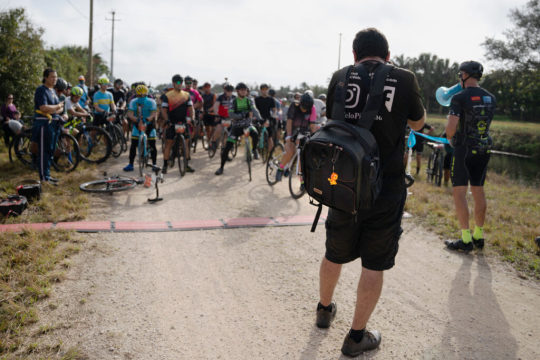
(Photo by Hernan Bernal)
I've been making pictures for over two decades now, and I still work on improving my photography every day - and improving the gear I use. I have found sports to be the most demanding field I've ever worked in, it being tougher - and ultimately, more satisfying - than even chasing wildlife in the Florida Everglades.
Any good photographer will tell you that you can get great pictures with any decent camera, and when I started covering cycling races, I had just come back from a short photography hiatus with a new-to-me Nikon D80. It marked my return to DSLRs after having sold all my Canon gear some time before. The D80 got me hooked on Nikon, and I sold a bunch of good photos from it, but I kept on "trading up" until I got to the kit I use now. My biggest reasons for upgrading included faster autofocus, weather-sealing on the body and lenses, and a more usable ISO range.
So what do you see me shooting with now out at races? I am a hardcore minimalist, but I still use two camera bodies, one with a wide lens and one with a telephoto. The Nikon Z 6 has become my primary camera - a big surprise to me, considering how many people want to talk down its sports capabilities. I may think differently about it if I were shooting 150mph race cars or motorcycles, but it does extremely well when photographing cyclists whizzing past me at 30+ mph.
My Nikon 70-200/4 VR is almost always attached to the Z 6 via the clunky FTZ adapter. The 70-200 is a staple in almost every sports photographer's bag, and that's why I resisted it for so long - trying to be different, but I was going about it the wrong way. I now see why this incredibly versatile lens is so damn popular. I picked the f/4 over the f/2.8 because of weight. Endurance sports are the only sports I shoot, and they are almost always out in the open and in the daytime - so I don't really need that extra stop. And after running from one end of a criterium course to the other all day while carrying almost 30 pounds of gear, I realized I needed to lighten up the backpack. The secondary body is one that I had wanted even back when I was still shooting Canon, having been released in 2012: the Nikon (former) flagship body, the D4. Tough as hell, and it shoots 11 frames per second - rat-tat-tat-tat! Ergonomic even with its considerable heft, it looks and handles the business. Mated to a Nikon 16-35/4 and hanging from a Peak Design Slide strap, it's really not bad to carry around.
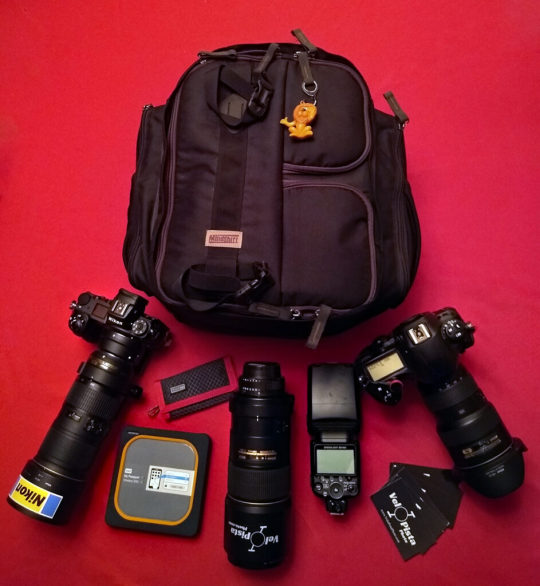
The 16-35 is the newest addition to the kit, having traded in my beloved Nikon 16mm fisheye and the utilitarian Nikon 24/2.8 lens I used for a while. I don't get the awesome distortion from the 16-35 that I did from the dedicated fisheye prime, but then the same distortion could easily become gimmicky at times. So the fisheye stayed in the bag more often than not. The 16-35 gives me that amazing wide-angle perspective I love, with a very useful zoom range.
Rounding out the lens selection, I held onto my Nikon 300/4 with a 1.4x teleconverter, for when I really need more reach. It's a cracker of a lens, but it has made less appearances at race courses since I have had the 70-200. What else is in the bag? Snacks, tons of batteries, a Think Tank Pee Wee Pixel Pocket Rocket case for all the memory cards, a Think Tank Hydrophobia rain cover for the unpredictable Sunshine State weather, a Nikon SB-900 flash, and a few other odds and ends. A rugged WD My Passport SSD hard drive serves as a backup and storage for second shooters. The pack itself is a Mindshift Gear (Think Tank again) MP-7 v2.0 backpack. It's pretty light and fits everything just right, laid out in a way that makes sense for an active outdoors photographer.
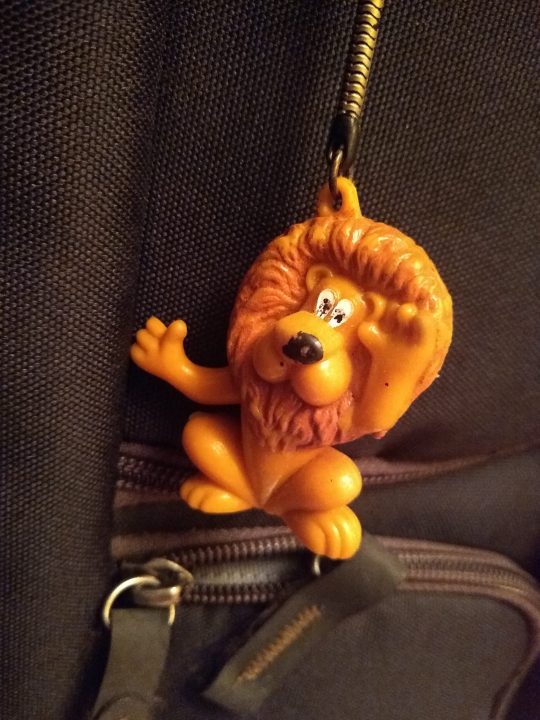
Finally, hanging defiantly from an exterior zipper is a French keychain of the lion mascot from longtime Tour de France sponsor Crédit Lyonnais, to remind me of determination and pushing past limits; just like I can always ride my bike faster, I can always make an even better picture.

6 notes
·
View notes
Text
Review: f-stop Gear Loka 37L Backpack
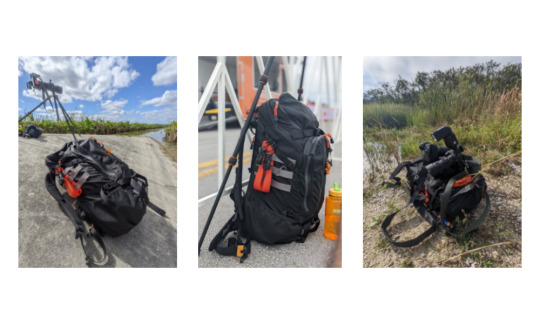
My wife says I have too many camera bags, while I always feel that there's room for at least one more. A bag for every situation, right? But it's good that she tells me that; it keeps me in check, because otherwise we might have a room full of packs and bags. As a result, I tend to "try out" a pack for a while and, if it doesn't fit my flow when I'm out there, I put it out back on the market and get something else. I tend to buy gently used, or last year's model, to save a little. And that's why this review is for a pack that is no longer sold new, f-stop's Loka - but you can buy the newer ultralight (UL) version from their site, and from all accounts, it's an improvement on an already impressive pack.
I had always gravitated toward the f-stop brand: rugged, durable, good-looking camera packs made for photographers who push their gear more than most, and who might need to pack more than most. Before covering endurance sports, I was happy to shoot with just one camera body and a couple of lenses. Now I wouldn't want to shoot a cycling race without my two Nikon bodies at hand, one with an ultrawide lens and the other with a tele. I also like to use HSS flash, on or off-camera, so I need the battery pack to go with it. And all the other usual stuff: batteries, cards, snacks, cords, and so on. I tried the Lowepro Whistler 350 for about a year, and always came home with a backache. Great pack, but hoofing it around a race course all day made every one of its pain points terribly apparent. After some patient searching, I found a used Loka 37L at a good price, and "traded up", as I do.
If you know about f-stop bags, then you've probably heard about their modular design. While some might say that buying inserts separately from the pack adds to the expense of a new bag, it's part of what makes these backpacks special - and cost-effective. How many times have you found a pack that seemed just right on the outside, but you really wished the inside compartment had been designed completely differently? With the Loka (and all of f-stop's other packs) you can pick the insert from their selection of Internal Camera Units (ICU's) that best fits what you want to carry. For me, the Pro Large ICU fits everything just right. So that fits a Nikon D4 with 70-200/4 attached, a Nikon Z 6 with an ultrawide on it, a GoPro, a flash, and accessories. All very well protected in the ICU, accessible by a big zippered flap on the back of the pack. Then there's a bunch of room on top of the ICU, which you can reach easily through the top zipper. Here I keep a rain jacket for me, one for the camera, and an f-stop Accessory Pouch. There is still room in there for more - including my laptop, in its own protected pocket.
Now on the outside of the Loka, there is a small top zippered pocket. This holds my snacks, business cards, and sunscreen. On the front, there is a large compartment with plenty of room for my battery pouches. Two side pockets hold my big Nalgene bottle on one side, and the tripod on the other. Some quick specs on the original f-stop Loka 37L
37 liter capacity
Weight: 3.45lbs (without ICU)
Meets international carry on size specifications
Designed to fit up to a Pro Large ICU
Aluminum internal frame
EVA padded waist and shoulder pads
DWR treated, 330D double Ripstop Nylon with 1500mm Polyurethane coating
Heavy-duty zippers
Honestly, there is so much versatile carrying capacity in the Loka that it's easy to just cram it with stuff, but I have been pretty good about keeping it light. Things like the laptop don't go on races or hikes with me, but it's great to be able to transport it from home to the Jeep or elsewhere without having to take another bag or case just for it. Speaking of hikes, I could see myself going on a thru-hike in the Grand Canyon in this pack, with a smaller ICU inside for just one camera body, and the rest of the bag to hold all the camping essentials. I even have f-stop's tough Gatekeeper straps, designed to clip onto the outside of the pack so I could strap down a sleeping bag, mat, and whatever else. (The snazzy Gatekeeper straps you see here, and all the orange accents, are part of the Nasturtium color kit I have on my pack.)
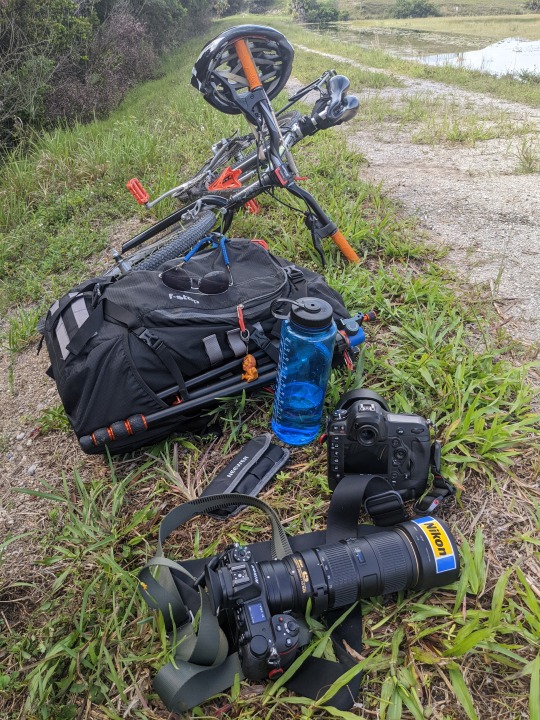
So how comfortable is the Loka? It takes a little adjustment, but once dialed in, the pack is pretty easy on my back, even when weighed down with everything I might carry in it. The waist belt really helps, as do the padded shoulder straps, but it's the internal aluminum frame that makes carrying this big backpack a lot easier than it ought to be. I've lugged it around during all-day races on a hilly course, and didn't end up with a sore back.
The pack really is tough, too. It gets emptied out and tossed to the side at races, hung from trees or railings, dragged through branches and brush on hikes through the Florida Everglades, and pulled in and out of the Jeep several times a day. The Loka is up for all that and a whole lot worse.
The best thing I can say about the f-stop Loka? It's the only backpack I've had that I have not thought of replacing.
#photography#camera bag#sports photography#sports photographer#cycling#racing#nikoncreators#gravel bike#road bike#mountainbike#gear review
2 notes
·
View notes